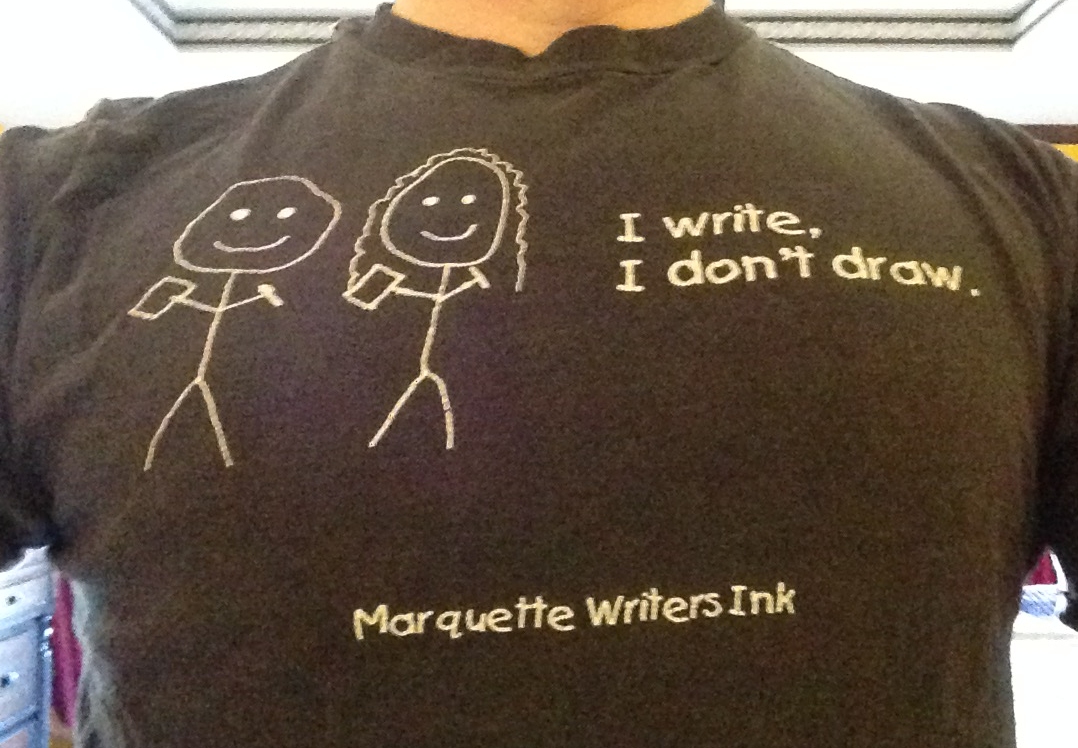So for a couple of years, I kept a collection of scrap fabric in case I got into sewing. By “a couple of years,” I mean the last seven. By “collection,” I mean every bit of something worn out: children’s pants too torn up to hand-me-down; old towels; all the bibs; discolored t-shirts in line for use as dust rags; and so on. Sometime in that period, I got a single sewing lesson and a new sewing machine for Christmas. After a while, I recognized the whole “getting into sewing” thing was probably a non-starter, so I started taking bags of the used fabric to the thrift store drop box by the YMCA, as a friend told me that they can sell that stuff to crafty people like I could have been.
Then, I eventually emptied four or five bins’ worth of scrap fabric from the garage, and I wondered if there was anything else I could dispose of in this like manner.
Now, for someone who didn’t grow up in the Great Depression, I have a don’t-throw-it-away mentality. So I have bins of clothing in the closet for just-in-case I can’t afford to replace them with cheap stuff from Walmart sometime in the future. Including, of course, the collection of 20-year-old t-shirts I took out of the active rotation in my dresser:

I have a drawer full of t-shirts as it is, and I’m getting a new one or two every month from 5K runs and whatnot, so the odds of my needing one of these is pretty low. Still, it’s a time capsule of the early 1990s. It included:
- The Queensryche t-shirt that I’d thought had already become dust rags.
- A Neo-Futurists “Too Much Light Makes The Baby Go Blind” sleeveless shirt that I got in 1994 when I convinced a couple of guys we should drive from St. Louis to Chicago for the night, and a friend of mine in Chicago suggested we go see this improv group, so we did.
- A Class of ’62 Surf Boys shirt with the sleeves cut off. I saw this band at bars and festivals a lot in my college years.
- A number of workplace polo shirts that I bought at garage sales, including Walmart and Blockbuster. I’d often thought it would be great fun to wear the Blockbuster one into a Blockbuster and answer any question I got with, “We don’t have that kind of movie here!” But I never did, and the chance is gone forever.
- A couple of shirts from places my sainted mother and mother-in-law had visited, including Las Vegas, Canada, and Albuquerque.
- A GenCon 1996 t-shirt. This is not the year I won the costume contest as the Were-Smurf–that was 1995. In 1996, I went with a couple of people, Scott and Lisa, I was gaming with at the time, and we stopped at the convention on Sunday before leaving so I could get this shirt.
- A couple of worn Jeracor and QA Hates You t-shirts.
And so on.
A couple of items did survive the culling:
The shirt I bought my father for Christmas just before he died:

A QA Hates You t-shirt in baseball sleeve length that I got for some reason or another, but I forget what. But it’s still in good shape.

A black t-shirt with a bear on it. I kept it because I think it looks cool, and I wear a lot of black t-shirts now in my middle-aged Goth phase.

A t-shirt I designed for the college writing group:

Briefly, a last gasp of my pack rattery asked, “What if one of the boys would like one of these shirts?” They’re turning the corner into adult sizes, and it won’t be long until they fill out these shirts (and go beyond, no doubt). But I don’t think they’re going to be as sentimental as their father, so I disregarded that voice, stuffed them in a garbage bag, and deposited them in the bin at the YMCA.
Someone is going to unpack it and know exactly where it came from, but that person might suspect the husband did it under duress or the wife discarded them. But, no, I did it on my own. And I probably won’t miss them as much as I expect I will, which, if I dwell on it, could really affect how I see the world and the things I accumulate.
 I’ve tried to pick up works br Hanson before, but I’ve never gotten far into them before putting them back. I thought I’d have better luck with this book because it falls into my specific interest of Greek and Roman history. So I got a good head start and then, when I wanted to put it aside, I was able to plow through it.
I’ve tried to pick up works br Hanson before, but I’ve never gotten far into them before putting them back. I thought I’d have better luck with this book because it falls into my specific interest of Greek and Roman history. So I got a good head start and then, when I wanted to put it aside, I was able to plow through it.
















